How an Austin woman left a wheelchair to run again after car accident
- Oops!Something went wrong.Please try again later.
Karina Castillo doesn't remember the accident. It was April 16, 2022, when she was driving home from a party in Dripping Springs. She had not been drinking, she said, but she was on an unfamiliar road. Her silver Toyota Camry hit head on with an SUV.
Her seatbelt saved her life, but the then-24-year-old broke seven bones in her body, including parts of both legs, her left arm, left elbow and right ankle. She only had use of her right arm.
The force of the seatbelt on her body caused the membrane inside her abdomen to separate from the abdominal wall.
She was in shock.
While doctors at St. David's South Austin Medical Center were able to repair her injuries through multiple surgeries, Castillo would need months of intensive physical therapy to be able to turn over, then to get into and out of a wheelchair, then walk with a walker, until finally she could take a few steps on her own.
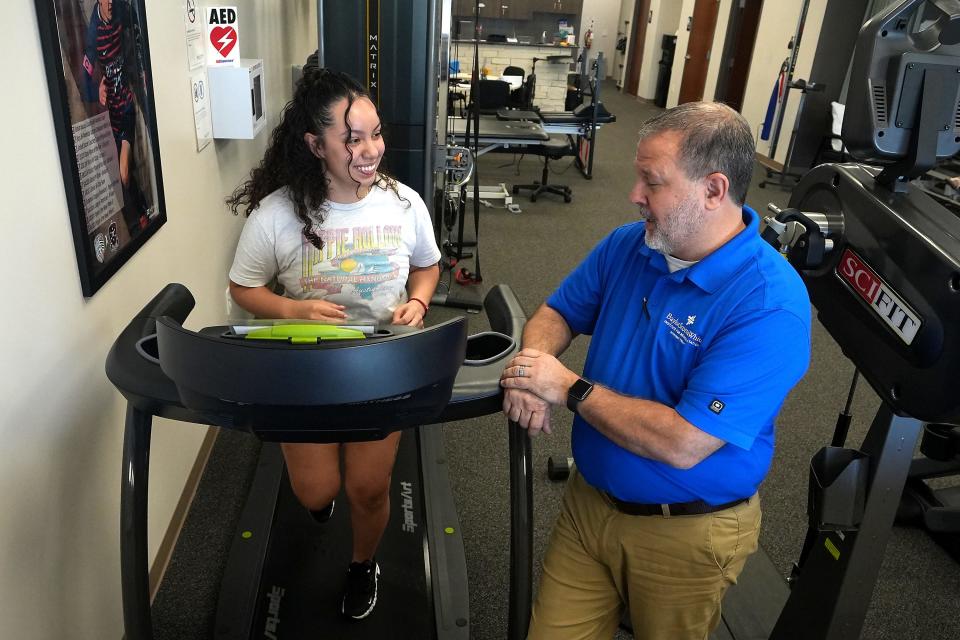
Waking up confused
Castillo was unstable for the first week and had to be put into a coma. She had two surgeries to fix her abdomen, including repairing her colon, which had been affected by the seatbelt.
"Doctors were shocked I didn't have brain injuries," she said. "It was 100% due to the seatbelt."
When she woke up from her coma, she told them: "I have to go to work. I have clients. I have things to do. I have appointments." Castillo worked in a law office.
"They looked at me really puzzled," Castillo said.
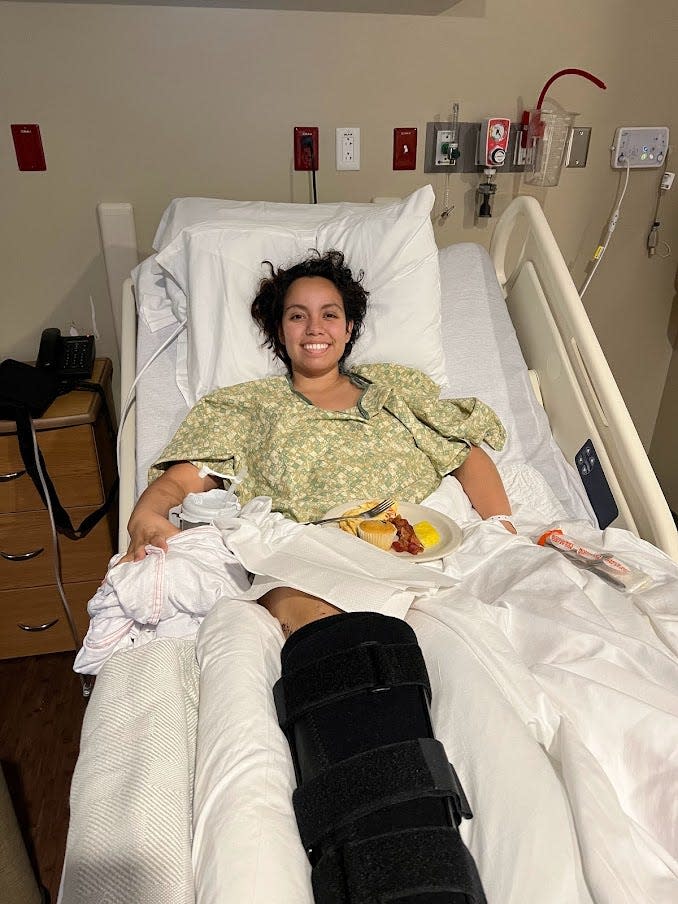
That's when she learned she had been in a car accident a week before and had been in a coma in the hospital that whole time.
She says her hospital room was like a scene in "Grey's Anatomy" TV show because the doctors were all gathered around her bed looking at her.
Going home again
For the next month, Castillo improved. First, she made it out of the trauma intensive care unit to the regular intensive care unit and then to a regular room.
Her next stop was an in-patient rehabilitation center, Encompass Health, across Ben White Boulevard from the hospital.
"I was bed bound the first month of rehab," Castillo said. Her physical therapist worked on moving her from the bed to the chair and being able to shift her weight.
Before the accident, Castillo loved to run. "I'm an athletic person," she said.
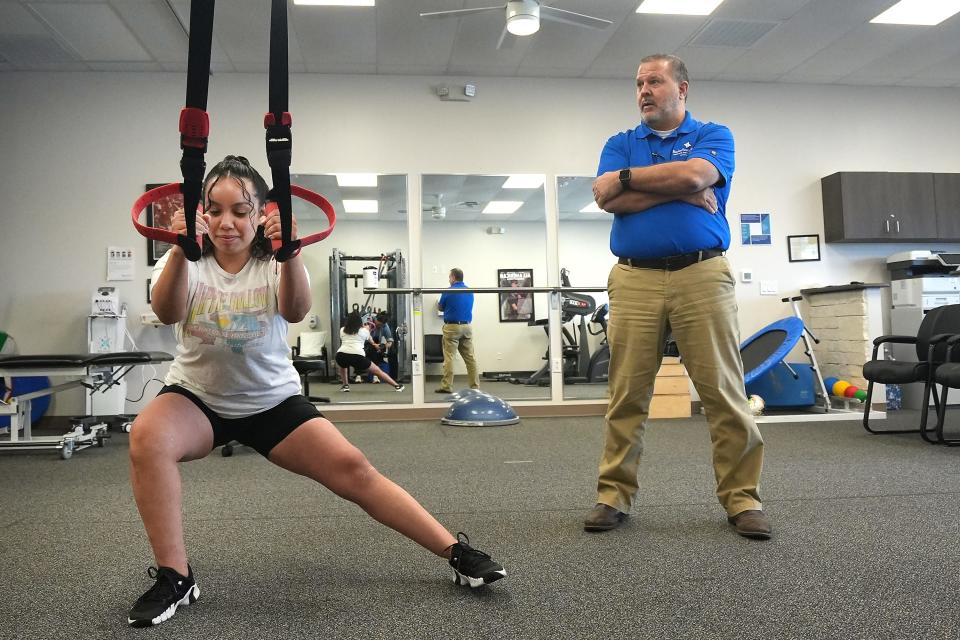
After two months at the rehab center, she finally was able to return to her apartment the second week of June. Family members from Nacogdoches traveled to Austin and took turns living with her. Her family, she said, was not prepared for everything she needed
Castillo could do nothing on her own, including using the bathroom or taking a shower. She didn't have the abdominal muscles to be able to pull herself up.
"The pain was so constant," she said. "No one could move me. Turning to one side would cause excruciating pain, almost like a vibrating pain."
Physical therapy: ACL tear almost kept this runner out of the Cap10K. Here's how to avoid similar injuries.
Starting outpatient physical therapy
The first week she was home, she started going to physical therapy at Baylor Scott & White Institute for Rehabilitation.
"I was scared," Castillo remembers. "I didn't know what physical therapy was." Everyone had told her she was going to be in a lot of pain, she said.
When she met with physical therapist Stephen Black, who heads the location off of U.S. 290 near Oak Hill, he could see her pain was not well controlled and called her doctors to get her something for nerve pain.
"The first day was a mess," he said. "Every time she moved it was like shaking a bag of bones ... the amount of pain she was having."
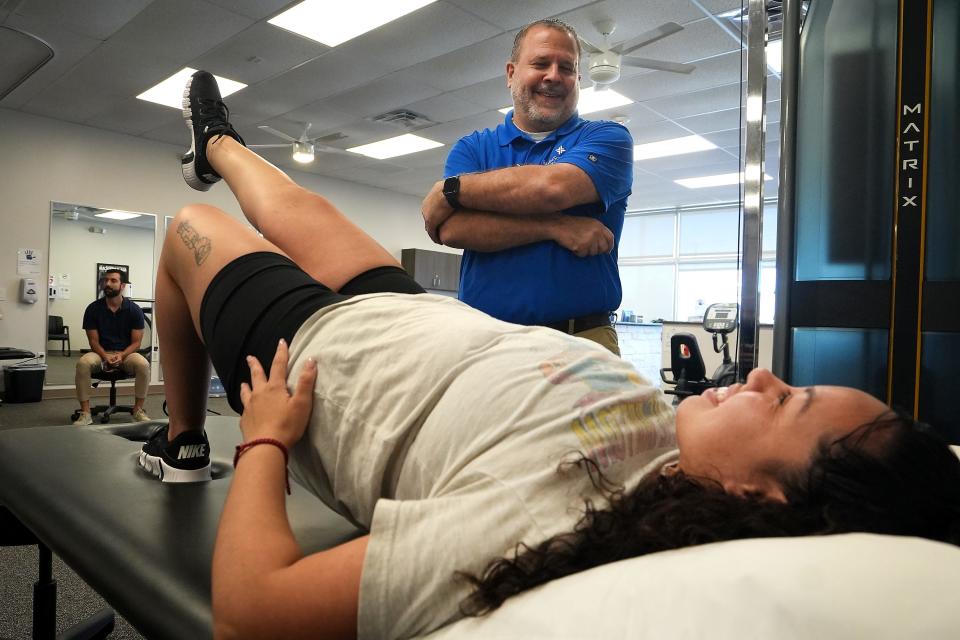
When she first started physical therapy, Castillo said: "I was very broken. I was completely mentally unstable."
That change in medicine made a huge difference, Castillo said. "It was a complete 180," she said.
For three days a week, an hour a day, Black and Castillo worked at moving her muscles again. "Simple movements, that you would think are nothing, were the hardest things to do," she said.
She began to make progress. Black could show her that progress on charts and graphs, even when it didn't seem like much had happened. "Once I got with the experts, it was much more reassuring to hear from them, 'You're going to be OK,'" she said, even if they didn't know what that OK looked like quite yet.
For five months, Castillo was in a wheelchair. She learned how to move in and out of her wheelchair more efficiently. She returned to work that October.
She moved onto crutches and then a walking boot while waiting for her ankle to heal from yet another surgery.
After seven months, she took her first steps without crutches, a walker or a wheelchair.
"The things our body learned how to do as a child, I was having to learn from scratch," she said.
She worked with one physical therapist who just worked on getting her walking gait to be more normal.
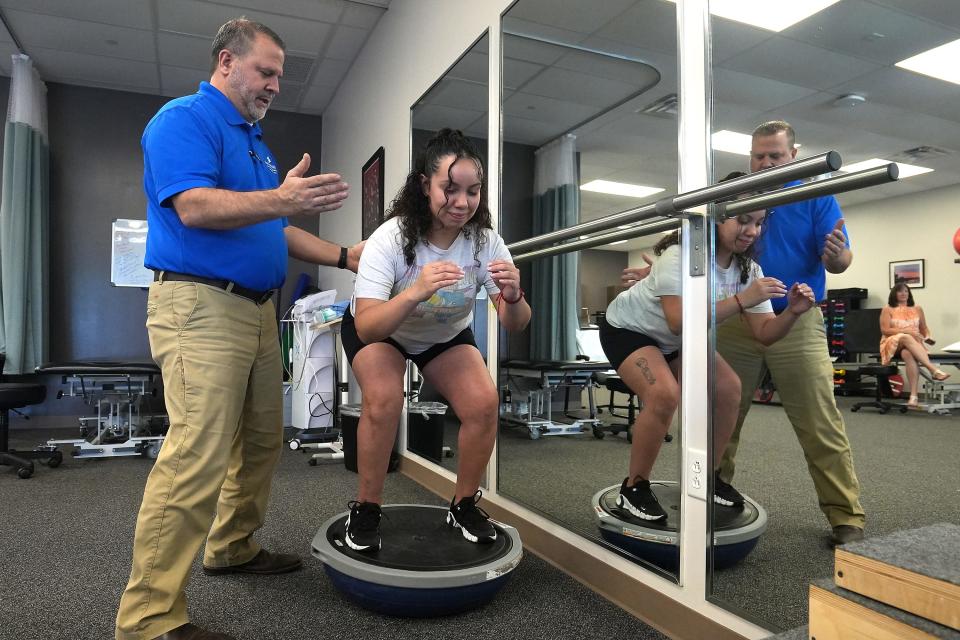
Return to health: 'Lost in a frozen body': Austin ice climber returns to mountains after stroke
A different Karina Castillo
By Aug. 23, 16 months after her accident, Castillo was released from physical therapy.
Now when she walks up to someone, they have no idea she had broken both of her legs.
Today she can run, squat and lift weights.
"Now, I can do everything I want to do," she said. "It's just a matter of building up my tolerance and strength."
This summer, she went skydiving.
When Castillo came into the center recently, Black had tears in his eyes watching her walk in the door. "She is so far past where I could have comprehended," he said of Castillo's progress.
Castillo is working on finishing her undergraduate degree at the University of Texas and then she plans to start a three-year program to become a physical therapist.
"That's now the goal," Castillo said. "I would love to be able to be another set of opinions."
"'You are new to this. These are the things I needed to know,'" she will tell her future clients.
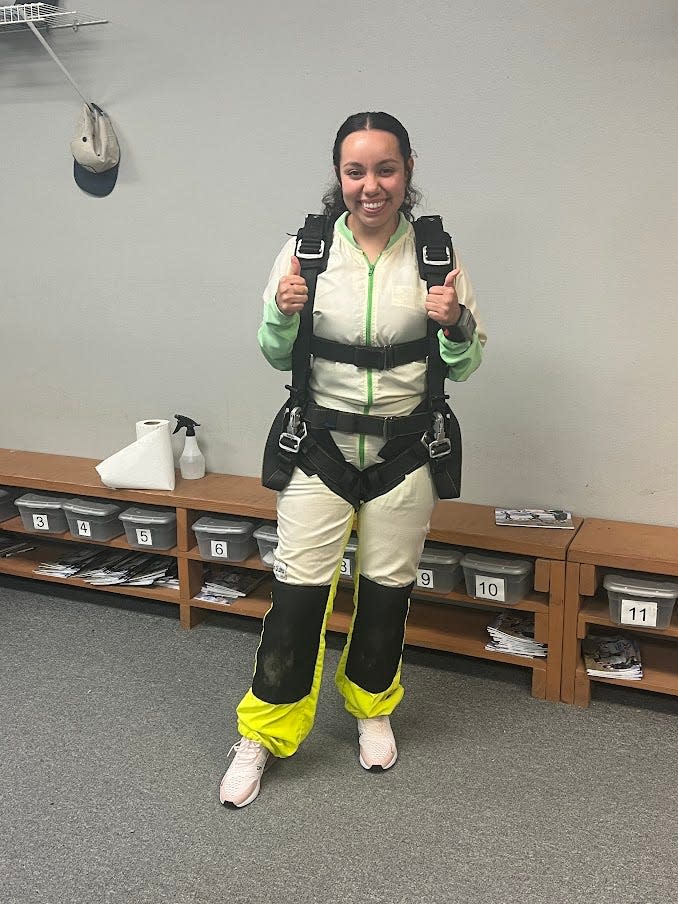
What makes physical therapy successful?
"Ninety percent of rehab is mental," Black said. "Most of us can get somebody better, but can you get into their head and get them to buy in and get them to do what we need them to do to?"
Getting into therapy early on: With time comes scar tissue and reduced range in motion, Black said, which create barriers.
Having goals: These should be both long-term and short-term goals. Achieving little steps along the way helps keep people going, he said.
Having goals related to what they do and who they are: What do they need to be able to do in their life? What do they want to be able to do? Castillo started with a big goal of being able to shower by herself and worked her way up to being able to run.
Doing the homework: Black said most people don't do the at-home exercises. Research shows that if someone is given more than three exercises, it will increase the chances they won't do it, Black said. At-home exercises should be easy and simple, but you have to do them, Black said. It's just like school. "If you do your homework in school, you tend to do better," he said.
Keeping the mind engaged: Being able to talk through therapy or laugh can help patients get through really tough times. "Humor to me is a very large part," Black said. With Castillo, "there were just as many laughs as there were tears," he said.
Creating a partnership: While Black can tell if a person is in pain based on their body language, it's easier if patients will tell him what's going on.
Progress isn't comfortable: He has heard all the jokes: PT stands for pain and torture or physical terrorists. "We're going to put you in places where you're not comfortable. It's about getting some changes," Black said.
Practicing for real life: Physical therapists re-create situations that a person is going to have to do regularly, such as climbing stairs or bending down to pick up something. "It's giving the person the confidence that they are not going to get hurt," he said.
This article originally appeared on Austin American-Statesman: Physical therapy returns Austin woman to running

